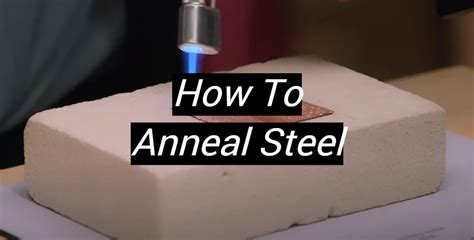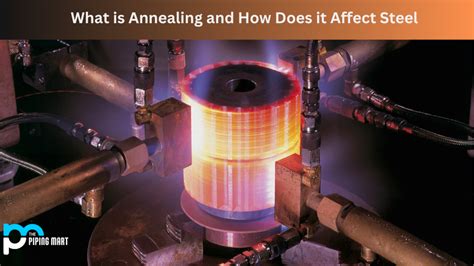annealing process sheet metal In metallurgy and materials science, annealing is a heat treatment that alters the physical and sometimes chemical properties of a material to increase its ductility and reduce its hardness, making it more workable. $179.99
0 · when metals are annealed they
1 · what does annealing metal mean
2 · what does annealed mean
3 · process annealing vs full
4 · metal hardening and annealed
5 · full annealing and process
6 · does annealing increase strength
7 · annealed steel properties
Standard depth 3-3/8" and extended depth 4-3/8" boxes accommodate multiple receptacle types with various degrees of weather protection. Choose pre-wired Woodhead solutions or make your own portable power outlet box.

when metals are annealed they
Sheet metal (particularly that which has been cold rolled) is usually annealed to remove the work hardening and restore the sheet’s ductility. This allows further working and forming of the annealed sheet by bending, . Annealing is a heat treatment process widely used in metallurgy and materials science. It involves heating a material to a specific temperature, holding it at that temperature for a period, and then allowing it to cool slowly.Annealing is a heat treating process that softens steel. This can make it easier to form or machine. It’s especially useful if you need to cut something that’s been welded up, like when you need to repair stripped threads on a shaft.Annealing is a heat treatment process where a material, typically metal, is heated to a specific temperature, maintained at that temperature for a set period, and then cooled slowly to room .
In metallurgy and materials science, annealing is a heat treatment that alters the physical and sometimes chemical properties of a material to increase its ductility and reduce its hardness, making it more workable.Annealing is the process used to alter the properties of metals, alloys and other materials to relieve internal stresses, strengthen the material’s ductility (ability to stretch as opposed to breaking) toughness and homogeneity (uniformity of its . Annealing is a heat treatment process that softens metals, making them more workable and less brittle. The process involves heating the metal to a specific temperature, .
Annealing is a heat treatment process in which the sheet metal is altered on a molecular level altering its strength and hardness. The metal is heated above its recrystallization temperature, .Annealing prepares metal to be formed by shaping, forming, and stamping processes. By creating a more ductile material, we prevent dangerous fractures from occurring in critical places. Fabricators use annealing to create parts and . Sheet metal (particularly that which has been cold rolled) is usually annealed to remove the work hardening and restore the sheet’s ductility. This allows further working and forming of the annealed sheet by bending, punching, or cutting. Annealing is a heat treatment process widely used in metallurgy and materials science. It involves heating a material to a specific temperature, holding it at that temperature for a period, and then allowing it to cool slowly.
Annealing is a heat treatment process that offers numerous benefits to metals and alloys. The primary advantages of annealing include: Annealing increases the ductility of metals, making them more pliable and less likely to crack or break during forming or bending operations.Annealing is a heat treating process that softens steel. This can make it easier to form or machine. It’s especially useful if you need to cut something that’s been welded up, like when you need to repair stripped threads on a shaft.Annealing is a heat treatment process where a material, typically metal, is heated to a specific temperature, maintained at that temperature for a set period, and then cooled slowly to room temperature.
In metallurgy and materials science, annealing is a heat treatment that alters the physical and sometimes chemical properties of a material to increase its ductility and reduce its hardness, making it more workable.Annealing is the process used to alter the properties of metals, alloys and other materials to relieve internal stresses, strengthen the material’s ductility (ability to stretch as opposed to breaking) toughness and homogeneity (uniformity of its structure) and enhance its mechanical and physical properties.
Annealing is a heat treatment process that softens metals, making them more workable and less brittle. The process involves heating the metal to a specific temperature, maintaining that temperature for a period, and then cooling it down at a controlled rate.
Annealing is a heat treatment process in which the sheet metal is altered on a molecular level altering its strength and hardness. The metal is heated above its recrystallization temperature, maintained at this temperature and then cooled in a controlled environment.

Annealing prepares metal to be formed by shaping, forming, and stamping processes. By creating a more ductile material, we prevent dangerous fractures from occurring in critical places. Fabricators use annealing to create parts and items from steel that need a workable material.
Sheet metal (particularly that which has been cold rolled) is usually annealed to remove the work hardening and restore the sheet’s ductility. This allows further working and forming of the annealed sheet by bending, punching, or cutting. Annealing is a heat treatment process widely used in metallurgy and materials science. It involves heating a material to a specific temperature, holding it at that temperature for a period, and then allowing it to cool slowly. Annealing is a heat treatment process that offers numerous benefits to metals and alloys. The primary advantages of annealing include: Annealing increases the ductility of metals, making them more pliable and less likely to crack or break during forming or bending operations.Annealing is a heat treating process that softens steel. This can make it easier to form or machine. It’s especially useful if you need to cut something that’s been welded up, like when you need to repair stripped threads on a shaft.
Annealing is a heat treatment process where a material, typically metal, is heated to a specific temperature, maintained at that temperature for a set period, and then cooled slowly to room temperature.
what does annealing metal mean
In metallurgy and materials science, annealing is a heat treatment that alters the physical and sometimes chemical properties of a material to increase its ductility and reduce its hardness, making it more workable.Annealing is the process used to alter the properties of metals, alloys and other materials to relieve internal stresses, strengthen the material’s ductility (ability to stretch as opposed to breaking) toughness and homogeneity (uniformity of its structure) and enhance its mechanical and physical properties.
Annealing is a heat treatment process that softens metals, making them more workable and less brittle. The process involves heating the metal to a specific temperature, maintaining that temperature for a period, and then cooling it down at a controlled rate.Annealing is a heat treatment process in which the sheet metal is altered on a molecular level altering its strength and hardness. The metal is heated above its recrystallization temperature, maintained at this temperature and then cooled in a controlled environment.

b&r sheet metal
$199.99
annealing process sheet metal|metal hardening and annealed